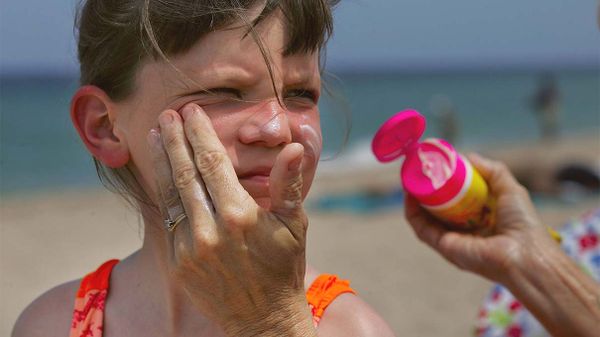
Summer in America means long, lazy days at the beach, pool or amusement park — hours of outdoor fun under the blazing summer sun. Most of us are smart enough to use a sunscreen with SPF 30 or higher when sun exposure is extra intense, but a new study finds that we're not applying it as thickly as we should, cutting sunscreen's effectiveness by 40 percent.
Sunscreen is rated for its sun protection factor (SPF), with SPF 30 able to block 97 percent of UV rays. The higher the SPF, the greater the protection, although even SPF 100 doesn't block 100 percent of UV light.
Advertisement
The problem, according to new research out of University College London, is that few of us use enough sunscreen to enjoy those high levels of protection. Lead author Antony Young explains via email that to calculate SPF ratings in the lab, sunscreen is applied at a thickness of 2 milligrams of product per each square centimeter of skin.
"An average woman has about 1.7 square meters (18.3 square feet) of skin," writes Young. "For a whole-body sunscreen, she will need about 33 grams (1.1 fluid ounces). With three whole body applications a day, that's about 100 grams (3.4 fluid ounces)."
For reference, 1 fluid ounce is roughly equivalent to a shot glass full of sunscreen and a large tube of sunscreen holds just 8 fluid ounces of product. So, one person spending a full day in the sun should use nearly half a tube all by herself.
Are you using that much sunscreen? Probably not. And you may not like the feel of it either.
Young and his colleagues estimate that our "real-life" application of sunscreen is closer to 0.75 milligrams per square centimeter, less than 40 percent of the recommended thickness. As a result, we're not getting anything close to the 97-percent protection promised on a bottle of SPF 30.
The good news from Young's study is that you can get away with using less product with SPFs of 50 or higher. He found even the real-world application rate of 7.5 milligrams of SPF 50 sunscreen per square centimeter provided "considerable DNA protection" compared to untreated skin.
Advertisement


